Genre: Strategy Developer: Systemsoft Publisher: Renovation Players: 1-4 Released: 1991
Back in 1991, the Genesis received a game from a genre that hadn’t really been given much attention in the U.S. home console market. Where Herzog Zwei quietly kick started the real-time strategy genre, Master of Monsters heralded from the era of turn-based strategy games. It came and went without much of an advertising push, and got overlooked by many who were waiting on and playing titles like Sonic The Hedgehog, Streets of Rage and OutRun. So was Master of Monsters a forgotten gem to be dug up, or a turd best left buried? Read on.
In the land of Mana, Gaia, the Prime Minster of Magic, summons the five masters of the disciples. As they sit around a table in the poorly lit room, the masters wonder why it is they have been summoned. With the days ahead of him dwindling, Gaia tells them that the time has come for a new Prime Minister of Magic to be chosen. After some of the masters make boisterous claims, Gaia silences them, and declares that all five masters are to meet in battle on the proving grounds of the ancient wizard, Anthrax. There, each master will fight until one stands victorious above the others. Saying no more, Gaia stands, and leaves. A portal opens where Gaia had been sitting, and the five masters know what resides beyond it. Stepping through, they find themselves in the proving grounds Gaia had spoken of. And the only way back is to use their beasts, intelligence, and magic to prove who is the master.
Graphically, MoM has its ups and downs. The overworld map gets the job done in representing the various types of land, sea and structures. Though not ugly, there aren’t a lot of colors used, and there’s an over abundance of color re-usage at times, making some graphics look a little cheap in some areas. As such, it would have benefited from a little sprucing up. To help the icons stand out on the tiles, the monsters are represented by brightly colored silhouettes. Not exactly graphically wowing, but as a nice touch the silhouettes change as your monster advances in levels. The overworld layout is clean, and you do get more detailed images of the monsters you have selected in the lower right corner (as well as info on that monster). When the scene shifts to the side view perspective for battles, things get nicer looking. The backgrounds have multiple layers of parallax going on, the monsters themselves are nicely detailed and decently animated, and though the monsters aren’t that large on the screen, you can see that they were designed pretty well.
So the graphics are bit of a mixed bag, but aren’t hideous. How about the sound? Well, the sound effects are kept to more of a minimum. They work and fit with the action, so there’s not much to complain or rave about. However, the music is another story. Produced by Koichi Sugiyama of Dragon Quest fame, and made by Hayato Matsuo (Shenmue II and Final Fantasy XII among others) and Hitoshi Sakimoto (Devilish and Bloody Roar among many others), the game has a fantastic soundtrack. The synths are chosen and used in a way so as to create an orchestral feel, with songs that run the gamut in terms of conveyed feel or emotion. Some songs like “Into the Deep Blue Sky” (BGM 6) and “Yellow Robe” (BGM 2) are true stand outs in a soundtrack that is filled with great music. You will not grow tired of these songs as you plot out your next move. Speaking of which…
In the gameplay department, MoM has a lot more depth than one might expect for an older Genesis cart in this genre. As previously stated, it’s a turn-based game, so it follows the simple format of you go, then the CPU opponent(s) goes, then you, and so on. There’s no time limit on your turns, so you can strategize to your heart’s content. You can also choose from five different “masters,” each with their own unique spells and monster rosters. This gives the game a nice dose of replayability.
As you plan your attacks, you’ll need to keep a number of things in mind. Each monster and spell you summon/cast will cost magic points, and each monster can only move a set number of spaces. The various land/water types affect how much of a chance your monsters will have to hit their opponents or defend themselves, as well as how many spaces your land-based monsters can move (flying beasts aren’t limited in this way). You’ll also have to contend with the time of day/night, as that too affects how much damage your monsters dish out.
There are towers scattered around each land. The more towers you possess, the more monsters you can have in your army (and the more towers you take away from opponents, the fewer monsters they can have). As you amass that army, your monsters will fight the forces of the other masters, and in doing so, gain experience. This experience builds up until you reach a set amount, at which time your monster will go up a level. Each monster can go up at least one level, with most going up two (there are a couple that can go up a third level).
Master of Monsters also gives you a number of ways to play. You can go right into the campaign, and try to best the CPU opponent(s) within a fixed number of turns for each of the game’s maps. If that doesn’t appeal to you, you can go head-to-head with three other human friends in a four-player war, or just sit back and take on one to three CPU opponents in a ninety-turn endurance battle. Thankfully, you can save the game (though only one game at a time), so you don’t have to do everything in one sitting… which is good, considering some battles will take hours.
So what’s wrong with the game? Well, the only really major complaint to be leveled against it is that the campaign is brutally hard. You have to beat the CPU in a set number of days (a.k.a. turns), and this number is quite low… especially when the later battles allow the CPU opponents to summon higher-level monsters right away. This can quickly lead to frustration unless you’re a strategy guru. On the minor side of things, besides the aforementioned less than stellar overworld map, it can take a while to reach your monsters when you’re fighting enemies far away. There’s a table that lists your beasts so you can warp over to the battle areas more quickly, but unless you know which monster is which, that isn’t always overly helpful. Lastly, the game takes a little time to get a handle on. There’s a lot to wrap your brain around, but it really shouldn’t take more than a game or two before you understand the various ratios, gameplay traits, and such.
In the end, Master of Monsters is a very good game. The depth it has in its gameplay makes for engrossing gaming sessions, the music is wonderful, and the game types available make it so that even if you’re getting your ass handed to you in the campaign mode, you can still kick back and enjoy taking on the CPU without the crushing turn limits. Sure, the overworld graphics aren’t the best, and the campaign mode can break your spirit by the sixth or seventh map, but it’s hard to hold being challenging against it. It’s not an arcadey “pick up and play” title, and that might turn some people off. But hey, that’s not the game’s fault.
So if you like fantasy and monsters, and still enjoy the days of taking turns with your CPU/human opponents, check out this little-seen Genesis gem. It might have been ignored by a lot of people when it first showed up, but it truly is their loss. I’d give this game an 8.5 if it were possible, but I’ll have to settle for an eight, as I don’t think it quite reaches a nine.
SCORE: 8 out of 10

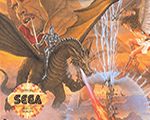
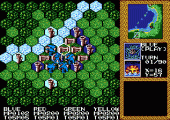
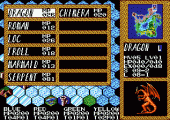
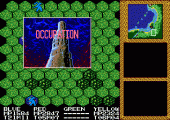
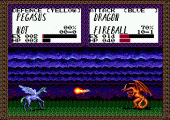
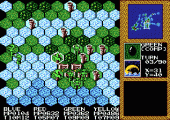
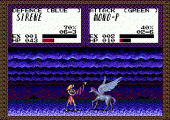
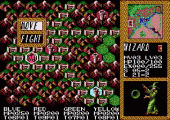
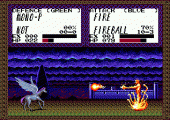
Recent Comments